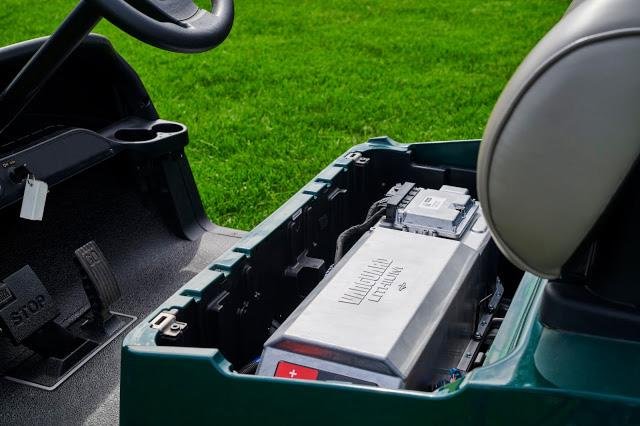Introduction: The Power Source Behind Every Ride
Behind every smooth, silent, and efficient golf cart lies a dependable power source — the golf cart battery. These batteries aren’t just accessories; they are the heart of your electric cart’s performance, influencing speed, range, and reliability. Whether you’re cruising across a golf course or using your cart for daily commutes, choosing and maintaining the right battery ensures peak performance and a longer lifespan.
This blog explores everything about golf cart batteries, from how they work and their types to tips for extending their life — so you can enjoy uninterrupted rides and optimal efficiency.
Understanding Golf Cart Batteries
A golf cart battery provides the energy that powers the cart’s motor and electrical components. Most electric golf carts run on battery systems with voltage configurations such as 36V, 48V, or 72V, depending on power needs.
Each battery setup consists of multiple smaller batteries connected in series to reach the desired voltage. For example:
-
36V system: Six 6-volt batteries
-
48V system: Six 8-volt or four 12-volt batteries
Higher voltage systems offer greater torque and speed, while lower voltage systems are more economical but slower.
Types of Golf Cart Batteries
There are three main types of golf cart batteries — each offering distinct benefits and requiring specific care.
1. Flooded Lead-Acid (FLA) Batteries
These are the most traditional and widely used batteries for golf carts.
-
Pros: Affordable, proven technology, and easy to maintain.
-
Cons: Require regular water refilling and produce fumes during charging.
-
Ideal For: Regular golf course use and short-range driving.
2. AGM (Absorbent Glass Mat) Batteries
A modern version of lead-acid batteries, these are sealed and maintenance-free.
-
Pros: Spill-proof, vibration-resistant, and long-lasting.
-
Cons: More expensive than traditional flooded types.
-
Ideal For: Users seeking durability and low maintenance.
3. Lithium-Ion Batteries
The newest and most advanced option.
-
Pros: Lightweight, fast charging, and long lifespan.
-
Cons: Higher initial cost but lower long-term maintenance.
-
Ideal For: Frequent users and those who prioritize performance.
How Long Do Golf Cart Batteries Last?
Battery lifespan depends on type, maintenance, and usage. On average:
-
Lead-acid batteries: 4–6 years
-
AGM batteries: 5–7 years
-
Lithium-ion batteries: 8–12 years
Proper charging habits, storage conditions, and regular inspections significantly extend life expectancy.
Signs Your Golf Cart Battery Needs Replacement
Just like any other power source, batteries degrade over time. Watch for these signs:
-
Reduced Range: Your cart doesn’t travel as far as it used to.
-
Slow Acceleration: The cart feels sluggish, especially on inclines.
-
Longer Charging Time: Indicates weakened cells.
-
Corrosion: Buildup on terminals or connectors.
-
Leaking or Swollen Case: A clear sign the battery needs replacement immediately.
Maintenance Tips to Extend Battery Life
Taking care of your golf cart batteries ensures longer life and consistent performance.
-
Charge After Every Use
-
Avoid letting batteries sit in a discharged state.
-
-
Use the Right Charger
-
Match the charger to your battery type and voltage.
-
-
Check Water Levels (Lead-Acid Only)
-
Refill with distilled water when needed, but never overfill.
-
-
Clean Terminals Regularly
-
Use a mixture of baking soda and water to remove corrosion.
-
-
Avoid Overcharging
-
Modern chargers with automatic shut-off help prevent this issue.
-
-
Store Properly
-
Keep in a cool, dry area and charge fully before long-term storage.
-
Charging Best Practices
A well-maintained charging routine keeps batteries efficient and safe.
-
Always charge in a ventilated area.
-
Avoid partial charges; complete cycles maintain cell balance.
-
If storing your cart, recharge it monthly to prevent deep discharge.
Performance Benefits of Quality Golf Cart Batteries
High-quality batteries do more than power your cart — they elevate your entire experience.
-
Consistent Power Delivery: Stable voltage ensures smooth performance.
-
Longer Range: Efficient energy storage increases travel distance per charge.
-
Faster Charging: Premium batteries recharge quicker.
-
Eco-Friendly: Reduced emissions and longer lifespans lower environmental impact.
Upgrading to Modern Battery Systems
If your golf cart still uses older lead-acid batteries, upgrading to lithium-ion is an excellent investment. Benefits include:
-
50% weight reduction for improved speed and handling.
-
70% faster charging times.
-
Up to 10 years of lifespan with minimal maintenance.
-
Integrated Battery Management Systems (BMS) for safety and performance optimization.
Common Mistakes to Avoid
To keep your batteries in top condition, avoid these common pitfalls:
-
Using Tap Water: Only use distilled water for refilling.
-
Letting Batteries Fully Discharge: Deep discharge shortens lifespan.
-
Skipping Regular Checks: Corrosion and loose connections reduce efficiency.
-
Mixing Old and New Batteries: Causes imbalance and uneven wear.
Environmentally Responsible Disposal
Old batteries should never be thrown away in regular waste.
-
Take used batteries to recycling centers or authorized dealers.
-
Many suppliers offer trade-in programs for responsible disposal.
Conclusion: Powering Every Ride with Confidence
Your golf cart batteries are the foundation of reliable performance, efficiency, and comfort. By understanding the types, maintaining them properly, and upgrading when necessary, you ensure your golf cart stays powerful for years.
Whether you prefer traditional lead-acid for affordability or modern lithium-ion for convenience, the right battery choice transforms your golf cart into a dependable, energy-efficient vehicle that delivers smooth rides every time.
